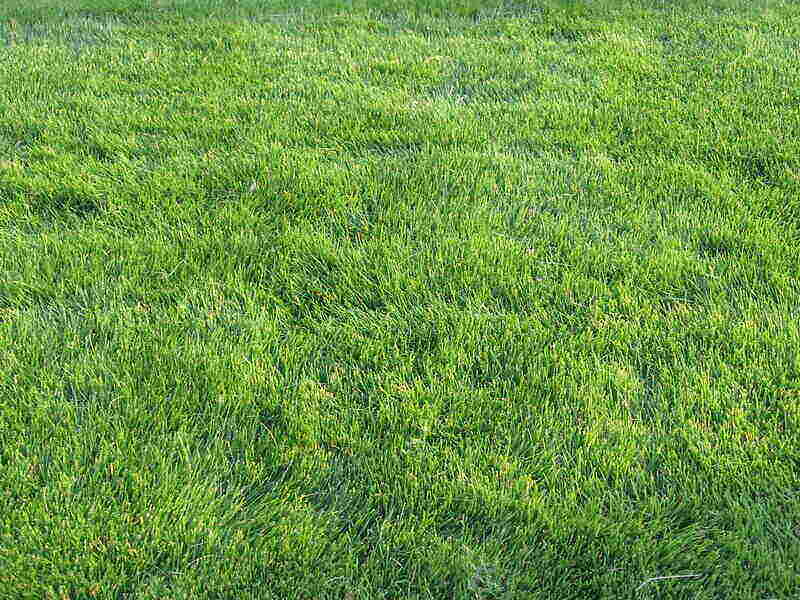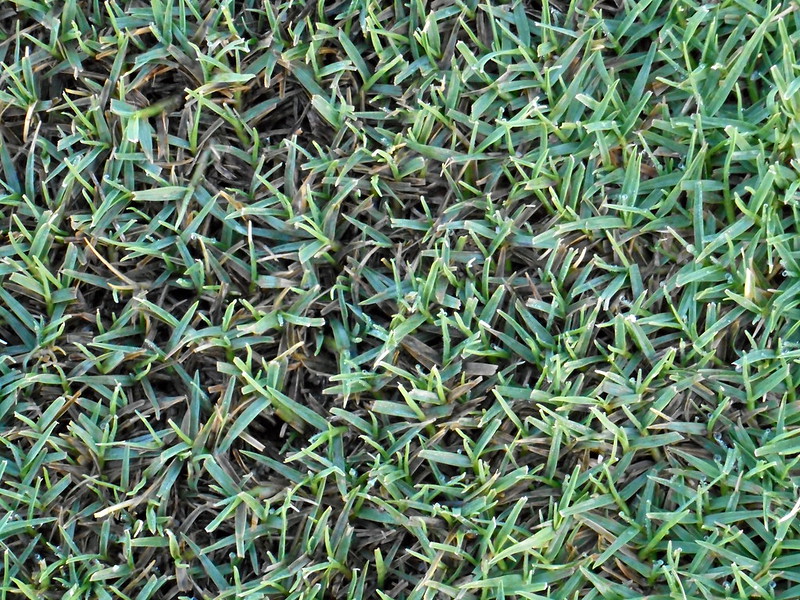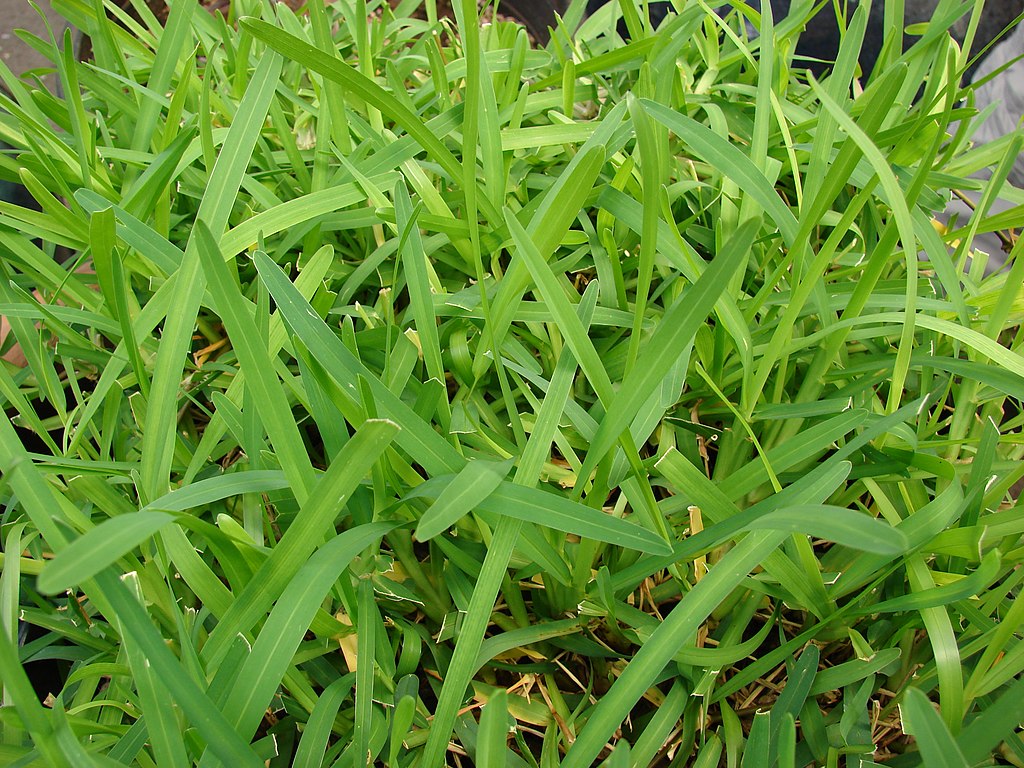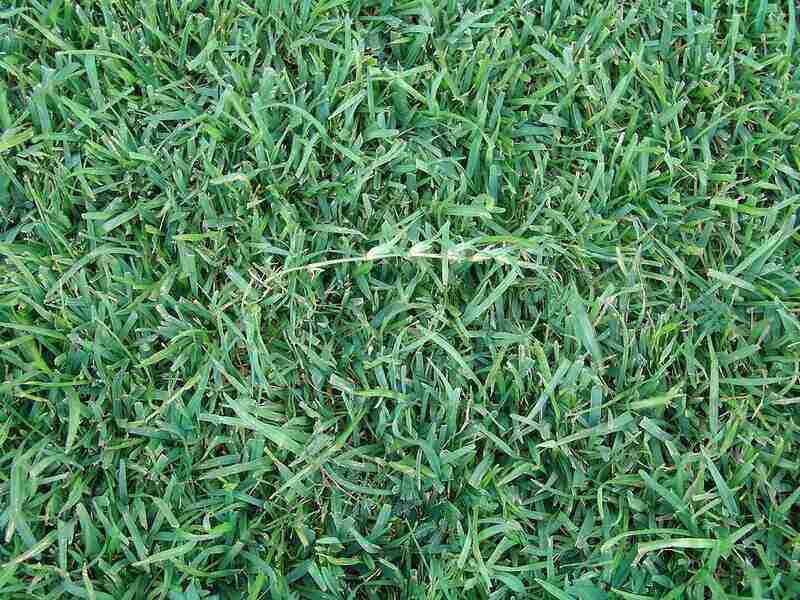8 Best Grass Types for Virginia
BY JEFFERY KEUSSEYAN | APRIL 30TH, 2023 | LAWN CARE, VIRGINIAVirginia is known for its hot summers and moderately cold winters, so you may often choose to stay home and relax in your own backyard. Whether it’s playing lawn games or having a family barbecue, it won’t be as memorable on a brown, grim-looking turfgrass. By examining the best grass types for Virginia, the only words to describe your lawn will be healthy and luscious green.
Along with having several plant hardiness zones, Virginia is divided into 5 regions that include Piedmont and Tidewater. It also lies in the transition zone, so there’s never one definitive answer to which grass seed will thrive in your area. Northern parts of the state are more suitable for cool-season grasses, while cities in the Coastal Plain area are better suited for warm-season grasses. The upcoming section will highlight the best types of grasses for every major part of your beloved state.
In this article, we will cover
- Tall Fescue
- Zoysiagrass
- Kentucky Bluegrass
- Bermudagrass
- Perennial Ryegrass
- St Augustinegrass
- Centipedegrass
- Fine Fescue
- Best Grass Types for Central Virginia
- Best Grass Types for Northern Virginia
- FAQ About Virginia Grass Types
- Choose Grass and Plant Varieties for Your Virginia Landscape
Warm-Season vs Cool-Season Grasses
With a wide variety of grass types to choose from, it is important to distinguish between warm- and cool-season grass. Here are some of their main differences:
Warm-season grasses thrive when temperatures range from 80 to 95 degrees Fahrenheit. During the winter, warm-season grasses will turn brown and become dormant. They have low frost-tolerance, enjoy high temperatures, and require less water than cool-season grasses. Warm-season grasses include Zoysiagrass, bermudagrass, centipedegrass, and St Augustinegrass.
Cool-season grasses thrive when temperatures range from 65 to 75 degrees Fahrenheit. They are able to tolerate frost, lower light, and lower temperatures than warm-season grasses. They can stay green throughout the winter, especially in transition zones like Virginia. Cool-season turfgrasses include tall fescue, creeping red fescue, Kentucky bluegrass, and perennial ryegrass.
Best Grass Types for Virginia
1. Tall Fescue
Tall fescue is a bunch-type grass known for its adaptability to a wide range of climates. It is suitable for northern and southern transition zones. This grass type germinates quicker than other cool-season grasses such as Kentucky bluegrass. Additionally, tall fescue has a deep root system, giving it a superior heat and drought tolerance. One downside to this grass is that it grows in clumps, limiting its capacity to self-repair when damage occurs.
Tall fescue grass can thrive in almost every region across the state, such as Piedmont, Northern Virginia, Coastal Plain, and Southwestern Virginia.
Classification: Cool-season grass
Spreads by: Produces short rhizomes but has a bunch-type growth habit
Shade tolerance: Moderate
Drought tolerance: Moderate to High
Foot traffic tolerance: Moderate
Maintenance needs: Frequent mowing. Does not produce significant thatch.
Mowing height: Set mowing height to 2 inches when grass reaches 3 inches tall.
Potential for disease: Tolerant of most diseases when properly maintained.
Soil pH: 5.5-6.5
Soil type: Adapted to a wide range of soil conditions, but prefers fertile clay soils with good drainage.
2. Zoysiagrass

Photo Credit: Russbach / Wikimedia Commons / CC BY-SA 3.0
Of all the warm-season grasses, zoysiagrass is one of the best in tolerating cold temperatures. With several species and cultivars available, it is a suitable turfgrass for transition zones. It may establish slower than some other warm-season grasses, but will eventually form a dense carpet of grass beneath your feet. You can overseed zoysia lawns with cool-season ryegrass for a green winter color. Overall, this grass type is perfect for families who enjoy lawn games and plenty of backyard activities.
You can plant this grass seed anywhere in Virginia except for the Valley and Ridge region and Blue Ridge Mountains.
Classification: Warm-season grass
Spreads by: Stolons and rhizomes
Shade tolerance: Moderate
Drought tolerance: Moderate to High
Foot traffic tolerance: High, but recovers slowly from damage
Maintenance needs: Low nitrogen fertilization requirements, although, it’s prone to thatch build-up.
Mowing height: Set mowing height between 1 and 2 inches.
Potential for disease: Good disease tolerance overall
Soil pH: 6-6.5
Soil type: Well-draining, some cultivars more tolerant of a wide range of soils than others
3. Kentucky Bluegrass
Kentucky bluegrass is a self-spreading, sod-forming grass that is aesthetically pleasing and comfortable to walk on barefoot. With an aggressive growth habit, it has an excellent capacity for self-repair. This makes Kentucky bluegrass an excellent choice for lawns that need to endure heavy foot traffic. This cool-season grass is not a good fit for shady lawns, so you might want to consider another shade-tolerant grass such as fine fescue.
Kentucky bluegrass is a great choice for homeowners in Northern Virginia, Piedmont, and the Blue Ridge Mountains.
Classification: Cool-season grass
Spreads by: Rhizomes
Shade tolerance: Low
Drought tolerance: Moderate
Foot traffic tolerance: Moderate
Maintenance needs: Moderate mowing frequency and high fertilization needs.
Mowing height: Set mowing height between 2.5 and 3.5 inches.
Potential for disease: Moderate to high; prone to several diseases, such as dollar spot, leaf spot, necrotic ring spot, summer patch, and stripe smut.
Soil pH: 6-7.5
Soil type: Performs best in well-drained, heavy soils with high fertility.
4. Bermudagrass

Photo Credit: Scot Nelson / Flickr / CC0 1.0
Bermudagrass has the fastest growing rate of all warm-season grasses. This helps it recover quickly from damage. Bermudagrass is more sensitive to cold than zoysiagrass, and flourishes in sites with full sun and good drainage. Overall, this turfgrass has excellent wear, drought, and salt tolerance.
It’s important to mention that bermudagrass is not a good fit for shady lawns. If you need a shade-tolerant grass that tolerates foot traffic, zoysiagrass might be the better choice.
You can successfully grow this grass seed if you live in Piedmont, Northern Virginia, Tidewater, and Southwestern Virginia.
Classification: Warm-season grass
Spreads by: Stolons and rhizomes
Shade tolerance: Low; thrives in full sun
Drought tolerance: High
Foot traffic tolerance: High
Maintenance needs: Needs frequent mowing due to fast growth rate; develops thatch easily; needs regular fertilization
Mowing height: Set the mowing height between 0.5 and 1.5 inches for hybrid Bermudagrass cultivars. Mow common Bermudagrass down to 1.5 to 2.5 inches.
Potential for disease: Good resistance to disease, although diseases are common; low resistance to insects
Soil pH: 6-6.5
Soil type: Tolerates most soil types
5. Perennial Ryegrass
Perennial ryegrass is best adapted to regions with moderate temperatures throughout the year. It has the highest wear-tolerance of any cool-season grass, with the ability to tolerate heavy foot traffic. This grass species has a rapid germination rate, which makes it ideal for overseeding warm-season grasses. When winter creeps in, overseeding will help extend your lawn’s green period.
If your family occasionally enjoys a few rounds of BucketBall, perennial ryegrass is a great option for your lawn. The Piedmont and Tidewater regions are the only parts of Virginia where this grass seed cannot thrive.
Classification: Cool-season grass
Spreads by: Has a bunch-type growth habit
Shade tolerance: Low
Drought tolerance: Low
Foot traffic tolerance: High
Maintenance needs: Moderate mowing and fertilization requirements. Thatch is not significant.
Mowing height: Set mowing height to 1.5 to 2.5 inches
Potential for disease: High. Common diseases include gray leaf spot, red thread, and leaf spot/melting-out.
Soil pH: Can grow in soils with a pH between 5 and 8, but prefers between 6 and 7.
Soil type: Prefers good drainage and fertility, but can tolerate some poor drainage.
6. St Augustinegrass

Photo Credit: Forest & Kim Starr / Wikimedia Commons / CC BY 3.0 US
Being the least cold-tolerant of all the warm-season grasses, St Augustinegrass grows best in areas that are not exposed to long periods of cold temperatures. It has an aggressive growth habit, but can easily be controlled around borders and flower beds. If you have a shady backyard, this species is the most shade-tolerant of all the warm-season grasses.
St Augustinegrass has a fair tolerance to salt, making it suitable for the Coastal Plain area. It cannot thrive in any other part of Virginia, particularly the north, as it is very susceptible to winter injury.
Classification: Warm-season grass
Spreads by: Stolons
Shade tolerance: Moderate. It is the most shade tolerant warm-season grass.
Drought tolerance: Moderate to High
Foot traffic tolerance: Low
Maintenance needs: Needs frequent mowing due to fast growth rate; develops thatch easily; needs regular fertilization
Mowing height: Set the mowing height between 3.5 and 4 inches.
Potential for disease: Moderate to high
Soil pH: 6-7.5
Soil type: Tolerates many soil types; prefers moderately fertile and moist (not waterlogged) soils; doesn’t tolerate soil compaction.
7. Centipedegrass

Photo Credit: James Becwar / Wikimedia Commons / CC0 1.0
Centipedegrass is commonly known as “lazy man’s grass”, mainly because it requires less mowing and maintenance than other warm-season grasses. This grass species is not very wear-resistant and cannot withstand heavy foot traffic. Unlike other warm-season grasses, centipedegrass is unable to compete with other species, so overseeding with ryegrass is not recommended.
Similar to St Augustinegrass, you can grow this grass seed only if you reside in the Tidewater region.
Classification: Warm-season grass
Spreads by: Stolons
Shade tolerance: Moderate
Drought tolerance: Moderate
Foot traffic tolerance: Low
Mowing height: Set the mowing height between 1 and 2 inches.
Potential for disease: Good resistance to diseases and insects
Soil pH: 5-6
Soil type: Acidic, infertile, at least moderately good drainage (very dense, clay soils produce poor results)
8. Fine Fescue
Fine fescue is one of the most fine-textured turfgrasses available. It has lower maintenance requirements than Kentucky bluegrass. If you decide to leave this grass unmowed, it will help create an attractive, dune-like appearance. It comes in a variety of species, including creeping red and chewings fescue. Taking the lead as the most shade-tolerant cool-season grass, fine fescue is a great choice if you have sycamore trees shading the lawn.
Fine fescue is often mixed with tall fescue to enhance performance in shady areas. If you live in the Valley and Ridge or Piedmont regions, fine-leaf grass seeds will be a suitable option for your lawn.
Classification: Cool-season grass
Spreads by: Creeping red fescue spreads by rhizomes, while other fine fescues are bunch-type grasses, such as Chewings, hard, and sheep fescues.
Shade tolerance: Moderate to High, depending on species
Drought tolerance: Moderate to High, depending on species
Foot traffic tolerance: Low to Moderate, depending on species
Maintenance needs: Low fertilizer and mowing needs
Mowing height: Set mowing height between 2.5 and 4 inches, depending on species.
Potential for disease: Moderate. Common diseases include red thread, leaf spot, dollar spot, summer patch, and powdery mildew.
Soil pH: 6-6.5
Soil type: Will not perform well in wet soil conditions. Prefers drier soils and tolerates a wide range of soil types and fertility.
Best Grass Types for Central Virginia
The best grass types for Central Virginia include:
- Tall fescue
- Perennial ryegrass
- Kentucky bluegrass
- Fine fescue
- Zoysiagrass
- Bermudagrass
Best Grass Types for Northern Virginia
The best grass type for Northern Virginia include:
- Tall fescue
- Perennial ryegrass
- Kentucky bluegrass
- Fine fescue
- Zoysiagrass
- Bermudagrass
FAQ About Virginia Grass Types
Zoysiagrass is a great choice of turfgrass for your backyard in Tidewater. It is a warm-season grass with the ability to tolerate shade, drought, and heavy foot traffic. It performs well during the colder months and resists weed growth, with the only downside being that it recovers slowly from damage.
Tall fescue is an incredibly versatile grass that can grow in nearly every part of Virginia. Being a cool-season grass, it is a perfect fit for Shenandoah Valley. Even if temperatures rise higher than usual, tall fescue has deep root systems that make it drought- and heat-tolerant.
One of the good things about cool-season grasses is that they can be planted in mixtures. Given Northern Virginia’s climate, this approach is preferable than choosing one specific type of grass. For a great mixture of grass seeds that can tolerate cold temperatures, shade, and heavy foot traffic, the following types are recommended:
• Kentucky bluegrass
• Perennial ryegrass
• Fescue such as creeping red
Choose Plant and Grass Varieties for Your Virginia Landscape
We each want something different out of our backyard. Some homeowners wish to limit outdoor chores with a low-maintenance lawn, while more active families tend to enjoy plenty of lawn games and barbecues. Depending on your personal preferences, you should choose the right type of grass or seed mix that will meet your needs.
In addition to turfgrass, there are more ways to spruce up your backyard and create the ultimate outdoor space. Consider low-maintenance landscaping ideas for your lawn, including Virginia’s native plants and hardscaping features.
Regardless of how low-maintenance your lawn is, it may still require the occasional mowing, pruning, or aerating. Looking for a Virginia lawn care pro near you? We have trusted lawn care pros in Chesapeake, Arlington, Virginia Beach, Norfolk, and Chesterfield, and many more cities across the state.
Main Photo by: PxHere